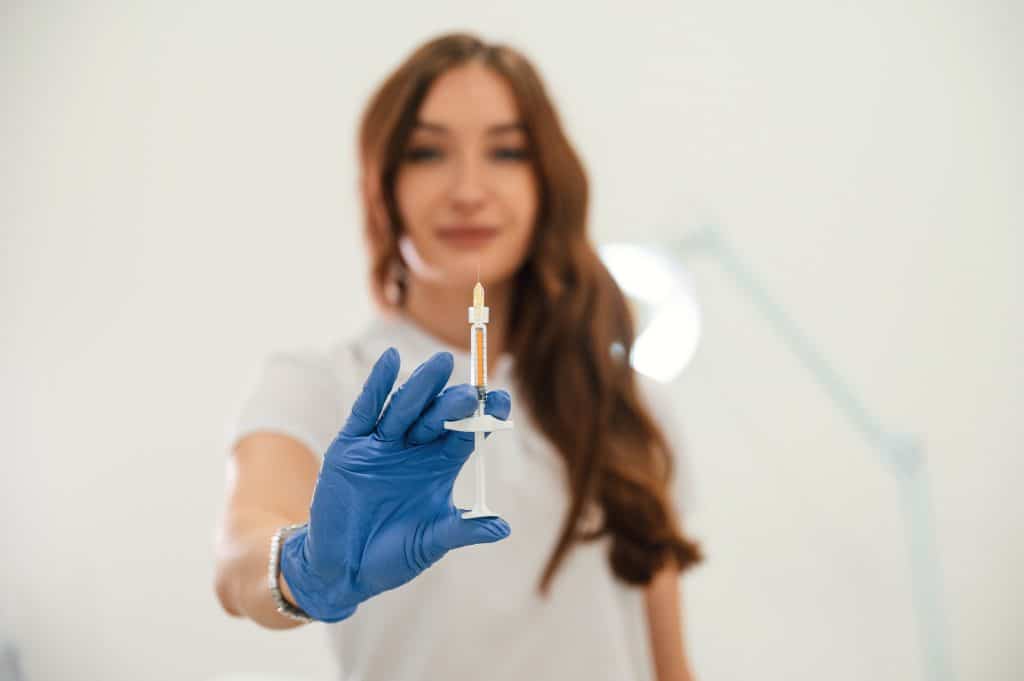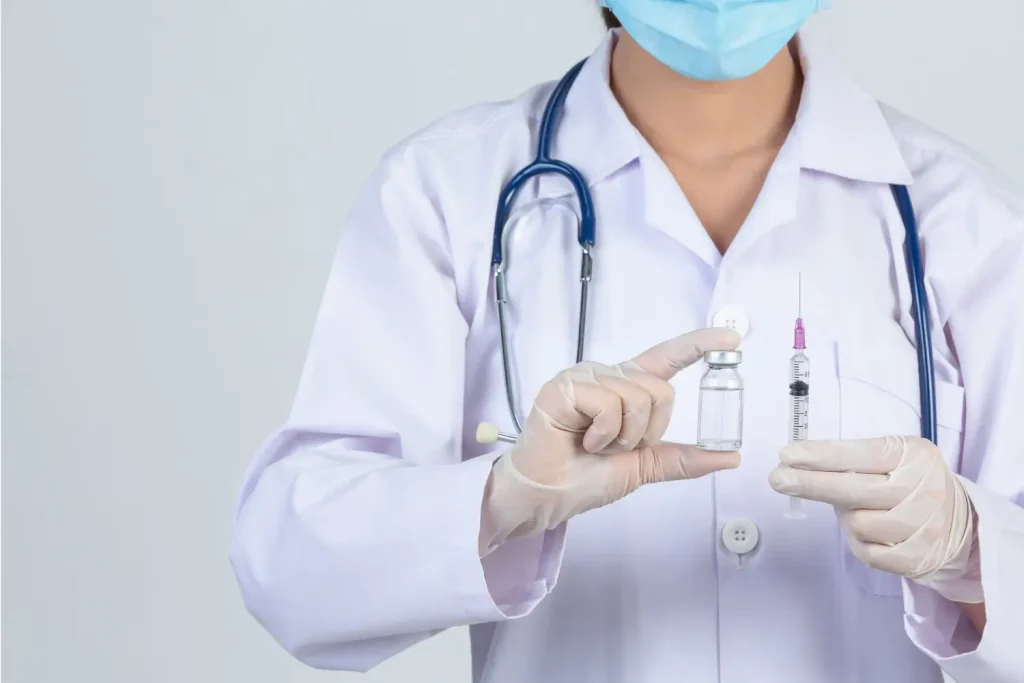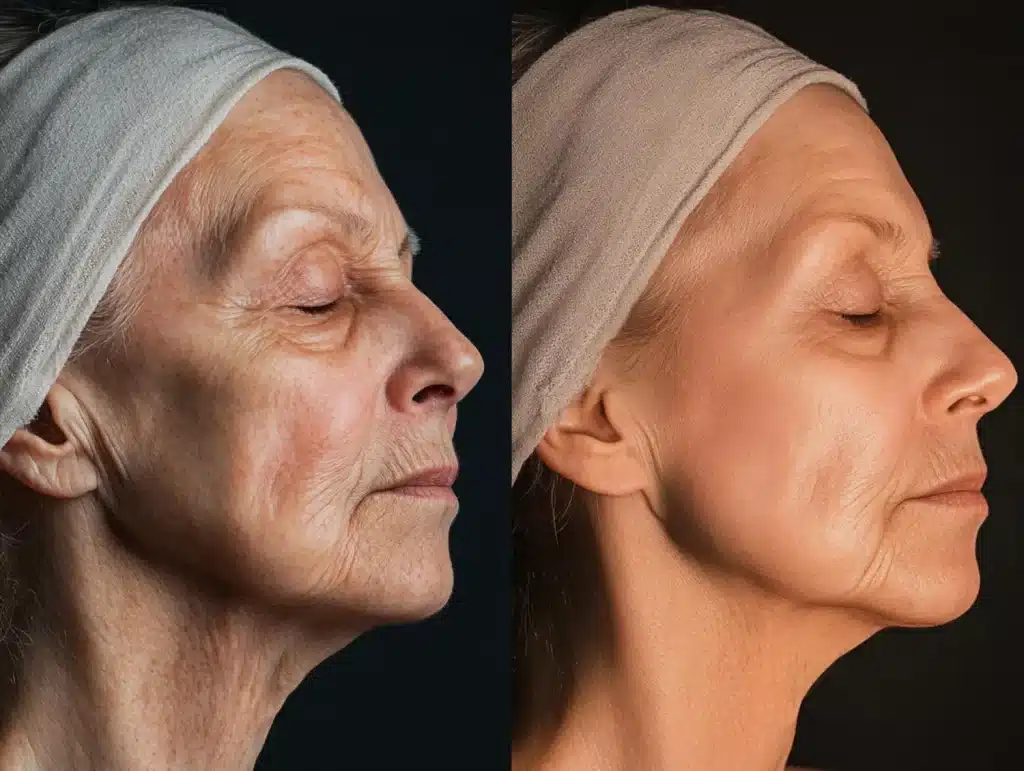Are you looking for ways to make your skin look smoother and younger? Botox is a popular solution that goes beyond wrinkle reduction. This article will explore how Botox can improve your skin’s texture, making it appear fresher and more vibrant.
Keep reading to discover the benefits of Botox for your skin.
Key Takeaways
- Botox helps skin look younger by making it tight and smooth. It also boosts collagen, which keeps skin firm.
- Regular Botox treatments can improve skin tone and texture, reduce scars, and make the face look more balanced.
- Studies have shown that long – term use of Botox leads to better skin quality, with fewer wrinkles and a youthful appearance.
Understanding Botox and Its Effects on Skin Texture
Botox performs marvels for the skin, smoothing wrinkles and enhancing its texture. It aids in achieving a younger look by tightening and evening out the skin. This raises the query: “Is Botox or fillers the better choice?“
Role in Collagen Building
Collagen is key for firm, youthful skin. It’s like the glue that holds everything tight and smooth. Here’s where Botox comes in. This muscle relaxant does more than ease wrinkles; it helps skin make more collagen over time.
The idea is simple – relaxing facial muscles means less stress on the skin. Less stress means fewer breaks in elastin and collagen fibers.
With repeated use, Botox can help keep your skin looking its best by boosting those critical elements that give it bounce and life – collagen and elastin. Plus, this isn’t a quick fix but a gradual improvement.
Think of it as investing in your skin’s future health.
Next up, let’s explore how this treatment makes an impact on overall skin tone and texture.
Impact on Skin Tone and Texture
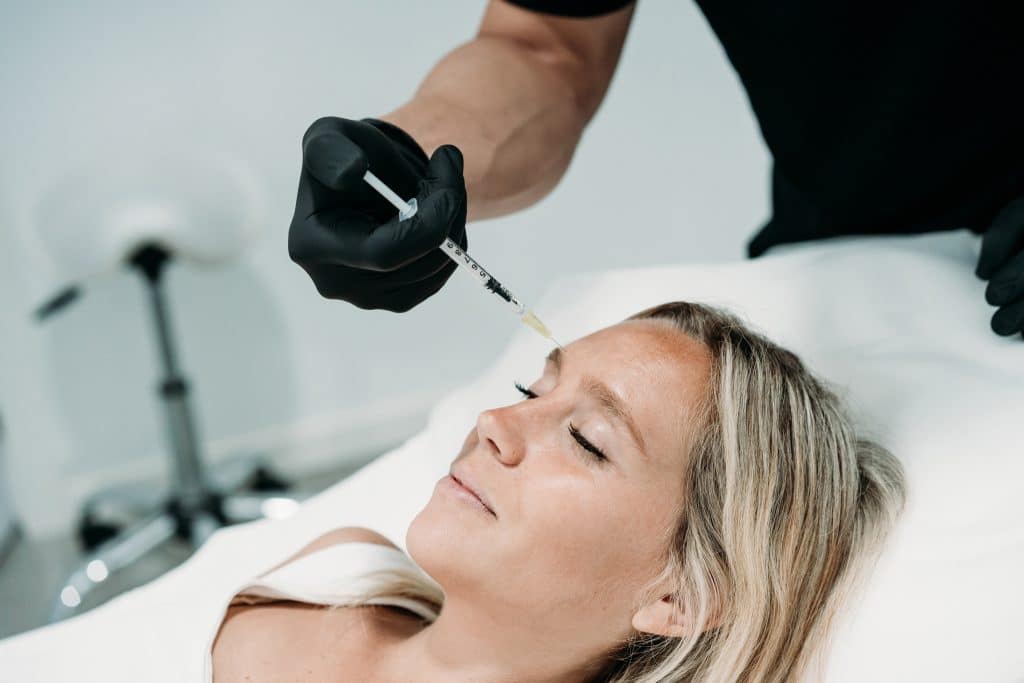
Botox plays a key role in enhancing skin tone and texture. It smooths wrinkles and fine lines, making the skin look younger. The treatment works by relaxing facial muscles. This action helps prevent new lines from forming.
Sun damage, enlarged pores, and dead skin cells also affect how our skin feels and looks. Botox can tackle these issues too.
With regular use, Botox improves elasticity in the skin. Muscle contractions often lead to breakdown of collagen and elastin. But with Botox, this process slows down, leading to firmer skin over time Studies show that treating fine lines with Botox not only fades them but also betters overall skin quality.
This technique is becoming a favorite for those looking to achieve smoother, more even-toned skin without surgery or downtime., making clear why many turn to it as part of their skincare routine.
Botox in the Reduction of Scars
Doctors use Botox to help scars look better. This includes big, raised scars known as hypertrophic scars. The way it works is by stopping certain things that make scars form in the first place.
Studies keep showing us how Botox can make skin smoother and decrease scar visibility.
Getting Botox for scar treatment is becoming more popular in cosmetic dermatology. It’s an injectable treatment that not only smooths wrinkles but also improves the texture of your skin where you have scars.
This new use for Botox offers hope for people wanting less noticeable scars on their skin.
The Long-Term Effects of Botox on Skin Quality
Studies show that regular Botox use can lead to improved skin quality over time. This includes better texture and fewer wrinkles.
Twin Study Findings
A study with twins over 19 years showed big changes in skin quality from Botox. One twin got regular Botox shots and her face had fewer lines and better skin than her sister who didn’t get as much treatment.
This tells us that using Botox for a long time can really help make the skin look nicer.
The twin who used Botox more often saw great results in wrinkle reduction and overall facial rejuvenation. Compared to her sibling, this twin’s skin stayed smooth and youthful-looking even as they got older.
These findings prove that cosmetic injections like Botox play a key role in anti-aging treatments, helping keep dynamic facial lines away for the long term.
Botox for Enhancing Other Facial Features
Botox does more than smooth out wrinkles. It can also shape and refine other parts of the face, giving a more balanced look.
Slimming the Face and Neck
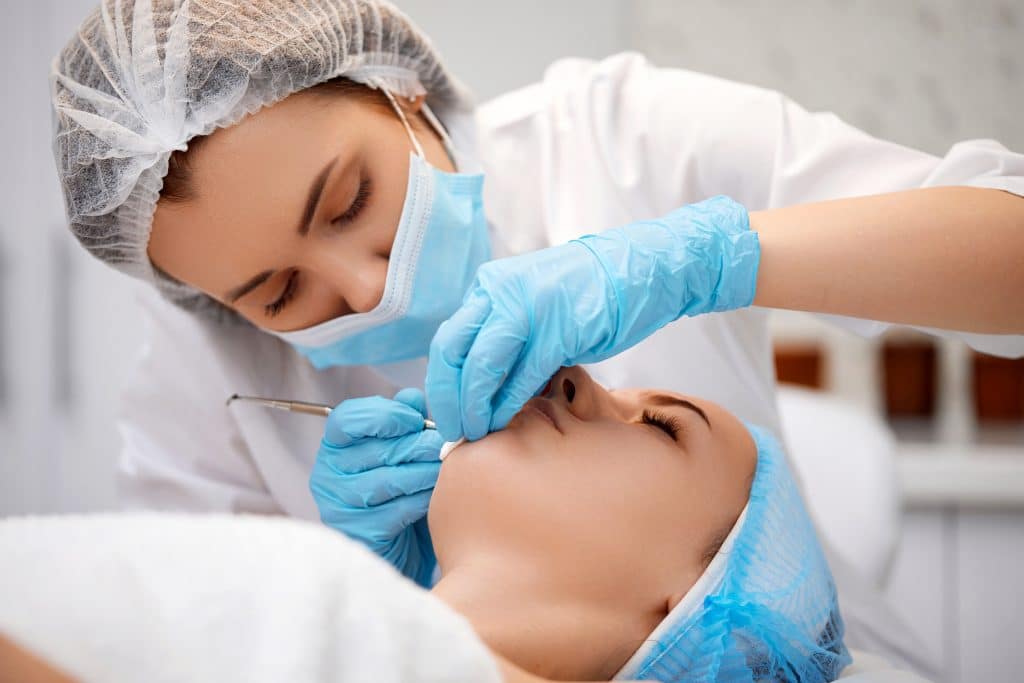
Facial slimming and neck contouring with Botox are effective ways to create a more defined appearance. Doctors inject Botox into specific muscles in the face and neck. This relaxes the muscles, making the face look thinner and the neck more elegant.
It’s a popular choice for people wanting to enhance their facial features without surgery.
This method also helps balance facial symmetry. By targeting certain muscles, professionals can correct unevenness, offering a smoother, more aesthetic look. The procedure is quick, with minimal downtime needed.
Patients appreciate the immediate results that improve over time, making it an attractive option for those seeking facial rejuvenation.
Lip Flip
Moving from enhancing the contours of the face and neck, we explore how a simple yet effective procedure called a Lip Flip can add that extra touch. This technique uses Botox to gently relax muscles around the mouth.
It beautifully alters lip shape, giving them a fuller look without surgery. A few precise injections at the corners and near the cupid’s bow work magic. The aim is not just augmentation but also preventing lines caused by pursing, thanks to neuromodulators like Botox or Dysport.
The Lip Flip stands out as it balances fullness with an authentic appearance. Unlike fillers, this approach focuses on muscle relaxation for natural-looking results. Patients enjoy more pronounced lips while maintaining their unique facial harmony.
Plus, those dreaded wrinkle lines around lips get minimized—a win-win for anyone seeking rejuvenation with subtlety.
The Clinical Impact of Microbotox on Skin Texture and Hydration
Microbotox shows great promise in making skin look and feel better. Doctors use tiny amounts of it to target just the right spots on the face. This treatment helps by reducing sweat and oil gland activity.
It also smooths out fine lines, making the skin appear more hydrated and full. Many patients notice their pores look smaller too. Microbotox is a safe way to enhance skin quality, including its texture and moisture level.
This method also includes using microhyaluronic acid along with microbotox for even better results. The combination boosts hydration, further improving how soft and smooth the skin feels to the touch.
Tests prove that this approach works well for refreshing facial features without major discomfort or downtime for patients. Skin rejuvenation becomes a quick, reliable process with these small-scale injections.
How Botox Improves Skin Over Time
Botox keeps making skin better as time goes on. It helps the skin make more collagen. This makes wrinkles less visible over time. The more you use Botox, the better your muscles get at not making those wrinkle-causing faces.
This treatment also teaches your face muscles to relax. Over months and years, this means fewer deep lines and a smoother look. Your skin starts to hold onto its young look longer thanks to these relaxed muscles.
With each session, patients see their skin getting smoother and looking fresher. Regular use turns into long-term benefits for the skin—less aging signs and more glow.
“Baby Botox”: A New Approach to Enhancing Skin Texture and Reducing Pores
As we continue to explore how Botox helps skin over time, let’s shift our focus to “Baby Botox.” This new technique is changing the game for those hoping to boost their skin texture and make pores smaller.
It uses tiny amounts of Botox injected into specific parts of the face. This method targets fine lines around the forehead, jawbone, and more areas without giving a frozen look.
“Baby Botox” has become very popular for its ability to give a natural result. People love it because it makes wrinkles less deep and improves how the skin looks and feels. Plus, it helps stop new wrinkles from forming.
Experts in Korea have been using something similar called Micro Botox to help with pores, wrinkles, and making skin smoother. These treatments show great promise in cosmetic injections for rejuvenation with minimal side effects.
Conclusion
Botox does more than just make wrinkles less visible. It changes the skin’s surface to look smoother and fresher. This treatment can help your face feel softer, reduce scars, and even make other features of your face look better.
Studies show that using Botox over time can lead to healthier-looking skin. So, for those looking to improve their skin’s texture and fight signs of aging, Botox offers a promising option.
About: Medical Spa RX caters to medical practices seeking top-quality products, addressing common patient inquiries such as “is Botox good for headaches” with a selection of safe and effective treatments. Our offerings include the securely vetted Ellanse filler among others. The streamlined purchasing process at Medical Spa RX ensures that you can quickly acquire popular and trustworthy brands like Profhilo. To support the operational needs of your practice, we provide exclusive discounts, competitive wholesale rates, and free shipping for bulk orders, enabling a consistent supply of diverse treatments, including Botox for headaches.
FAQs
1. How does Botox help with wrinkles?
Botox relaxes your muscles, which makes the skin smoother and reduces wrinkles.
2. Is getting Botox a long process?
Nope, it’s pretty quick – usually done in just a few minutes.
3. Can Botox do more than just smooth out wrinkles?
Yes! It can also make your skin look fresher and improve its overall texture.
4. Will I see the effects of Botox right away?
Not immediately – it typically takes a few days to see the full smoothing effect.
5. How long does the effect of Botox last?
The smooth look lasts about 3 to 4 months before you might need another visit.
Reference
https://www.ncbi.nlm.nih.gov/pmc/articles/PMC6489637

